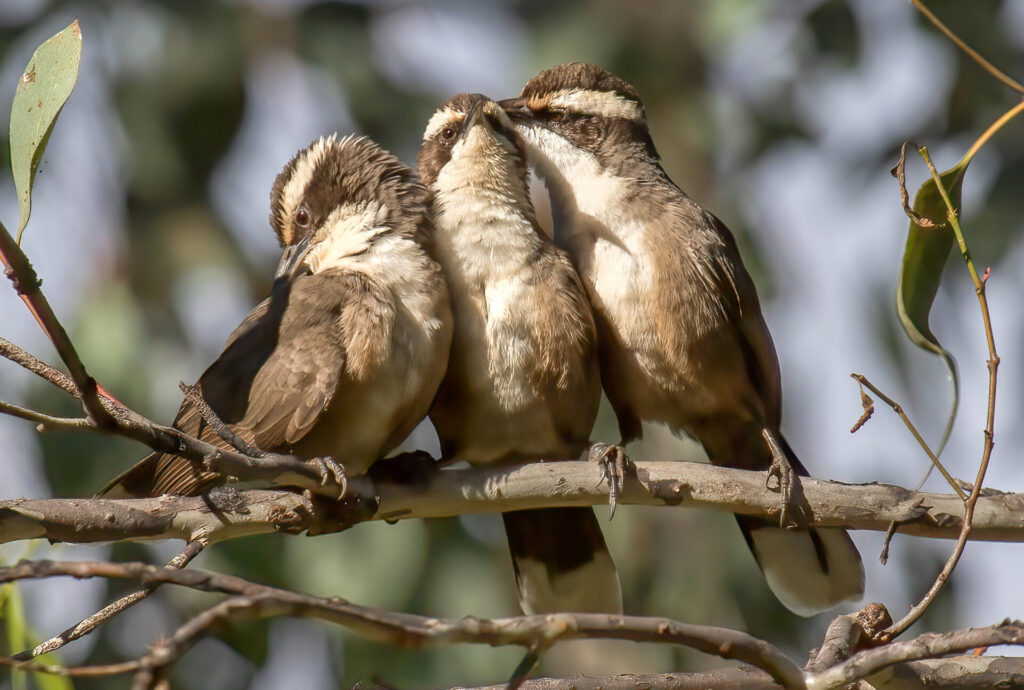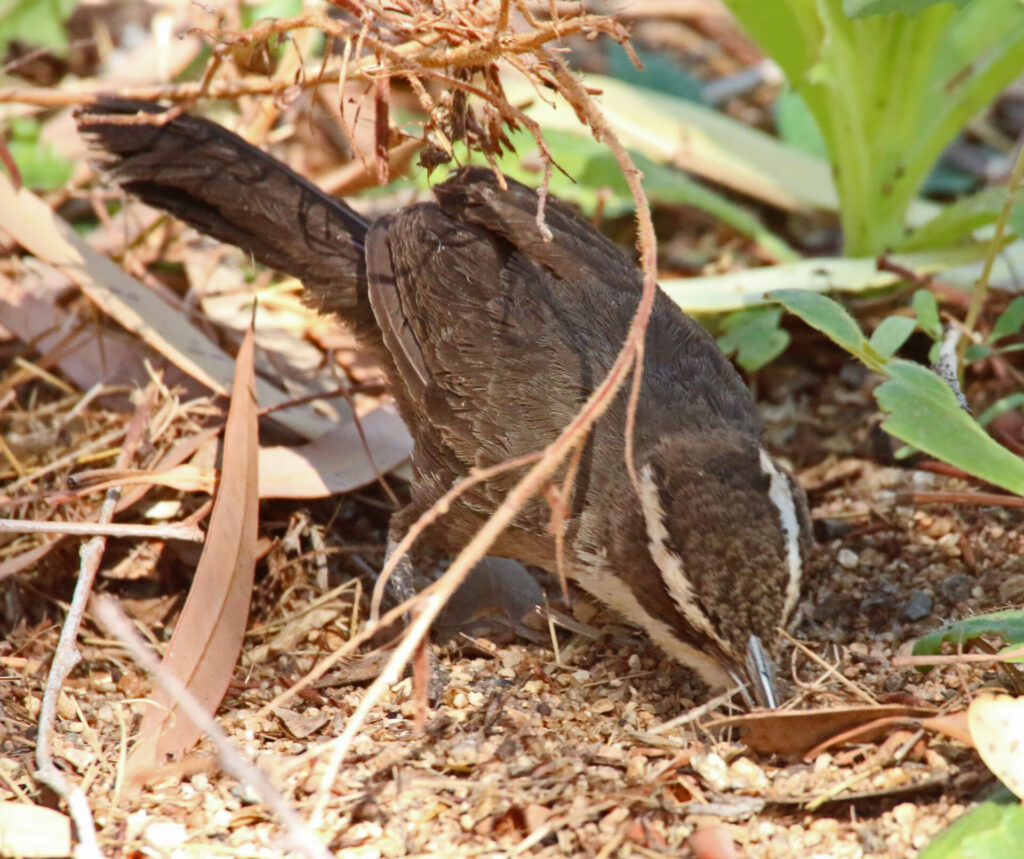Babblers (Pomatostomidae) and Logrunners (Orthonychidae) are thought to be sister families, diverging from their common ancestor about 30 million years ago in the Oligocene at roughly the same time as passerine songbirds – the greatest global radiation of birds with 6000+ species extant today – dispersed from Australasia and began colonizing the rest of the world. All four Australian species of babbler occur in Queensland with a fifth in PNG.

The White-browed Babbler (WBB) has the most peculiar Queensland distribution of any bird species, being confined to relatively small regions in the south-east and far west – areas and habitats quite disparate, especially climatically. In the south-east it occurs on the western slopes of the Great Divide centred in the Granite Belt, and extending north to Toowoomba, Dalby and Chinchilla and west to Miles, Meandarra and Goondiwindi (Storr). Reported occurrences east of Toowoomba-Stanthorpe and north and west of Miles-Meandarra, of which there are many in the Australian Bird Atlases, Atlas of Living Australia (ALA) and eBird, require confirmation. The western population occurs throughout the Simpson Desert in Queensland, east to the Toko Ranges, Sandringham and Birdsville, largely confined to stands of Georgina Gidgee (Storr and personal observations).
Confusion with the other three species of Babbler has no doubt led to erroneous reports of White-browed Babbler (WBB) outside the range described here. The nominate subspecies of the Grey-crowned Babbler occurs throughout the eastern half of Queensland, presumably accounting for WBB records east of the Divide, while the eastern limits of the Chestnut-crowned Babbler and Hall’s Babbler in the southern inland approach the known western limits of WBB, presumably explaining many WBB reports there. In particular, the very similar looking Hall’s Babbler historically accounted for numerous records of WBB in central and western inland Queensland, quite understandably since Hall’s was not recognized as a distinct species until 1964. At Bowra near Cunnamulla, well west of the accepted range of south-eastern WBB, the other three species of Babbler are common, each with distinct habitat preferences. In central and south-west Queensland, Hall’s Babbler ranges widely through the mulga belt, west to 141º (e.g. Diamantina Lakes NP), and the identity and verification of reports of Babblers between that longitude and the eastern fringes of the Simpson Desert require clarification.

Although an untested hypothesis it is likely that competition with its three larger congeners, particularly Hall’s, has led to the extraordinary distribution pattern of WBB in Queensland, with Hall’s effectively excluding WBB from the vast expanses of mulga habitat. WBB is widespread in mulga in arid regions of northern South Australia and central-southern Western Australia where Hall’s does not occur.
White-browed Babblers are birds of shrubby habitats, either as understorey in eucalypt woodlands in the south-east, or the gidgee shrublands and riparian habitats in the far west. Highly social, groups typically of four to six noisily and busily work through the shrub canopy and ground layer using their long decurved bills to pry under bark and move aside litter in their search for invertebrates (and some seeds). As well as a distinctive territorial song, birds call frequently with a range of louder and quieter chortles and ‘clacking’ sounds to keep the group together and communicate potential threats. There can be few more pleasing sights to the birder than a group of babblers at work – calling, foraging, moving steadily through their territory – or at rest, often preening, while still uttering quieter bubbling noises that to my ear spell contentment. Inquisitive birds, they will often respond to squeaking and mimicry of their calls and cautiously approach a stationary observer, jumping about briefly higher into view before ducking, calling excitedly, into deeper cover, in that dance of curiosity and fear. As with other Babblers WBB parties roost together at night in large stick ‘nests’; they build several in their territory and then either fit one out or build a new one for breeding each spring.

Unfortunately, White-browed Babblers are sensitive to widespread anthropogenic landscape transformation. As with many native bird species they cannot persist locally if their habitat is cleared or highly altered (e.g. shrub removal, heavy grazing). More broadly however even when patches of seemingly suitable habitat remain, they disappear from entire landscapes – either as urbanization encroaches around larger towns and cities, or across huge swathes of farmland after most of the native vegetation has been removed for agriculture, as in the middle and lower catchments of the Condamine River. These declining woodland bird species – Southern Whiteface, Crested Bellbird, Hooded Robin and Diamond Firetail are other examples germane to south-eastern Queensland’s western fall – have gone locally extinct long before the Koala or higher-profile listed species of parrot or cockatoo. Their extirpation from extensive regions highlights an under-reported and insidious feature of the current and deepening biodiversity crisis – the permanent loss of distinct genes (alleles) and therefore evolutionary potential. Only a massive ramping up of “revegetation at scale” (whole farms, or multiple connected blocks of 20-50 ha of patchy and shrubby native vegetation) could afford any chance of stemming this extinction tide and, perhaps, in time allow such species to recolonize these denuded impoverished landscapes.


